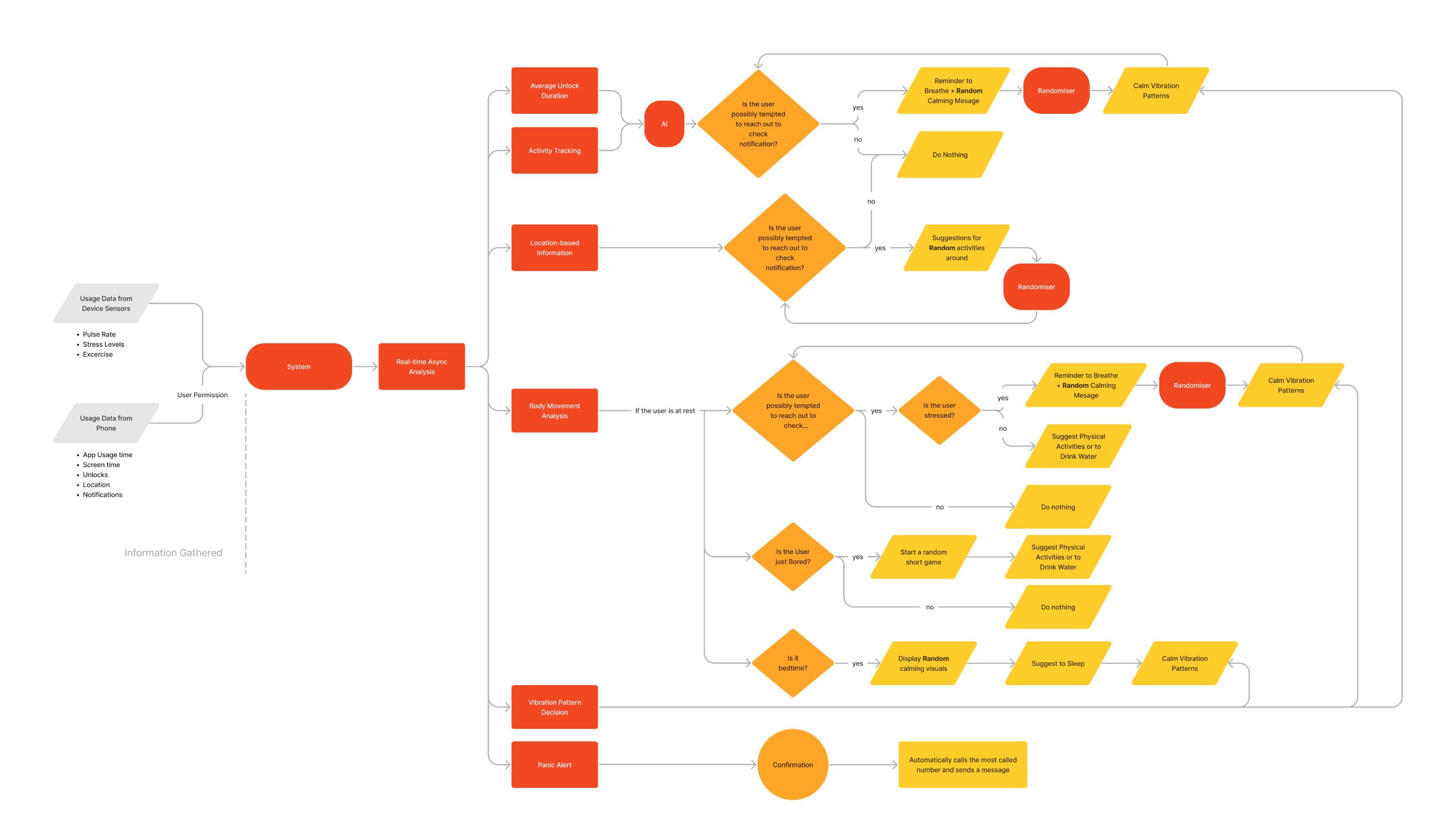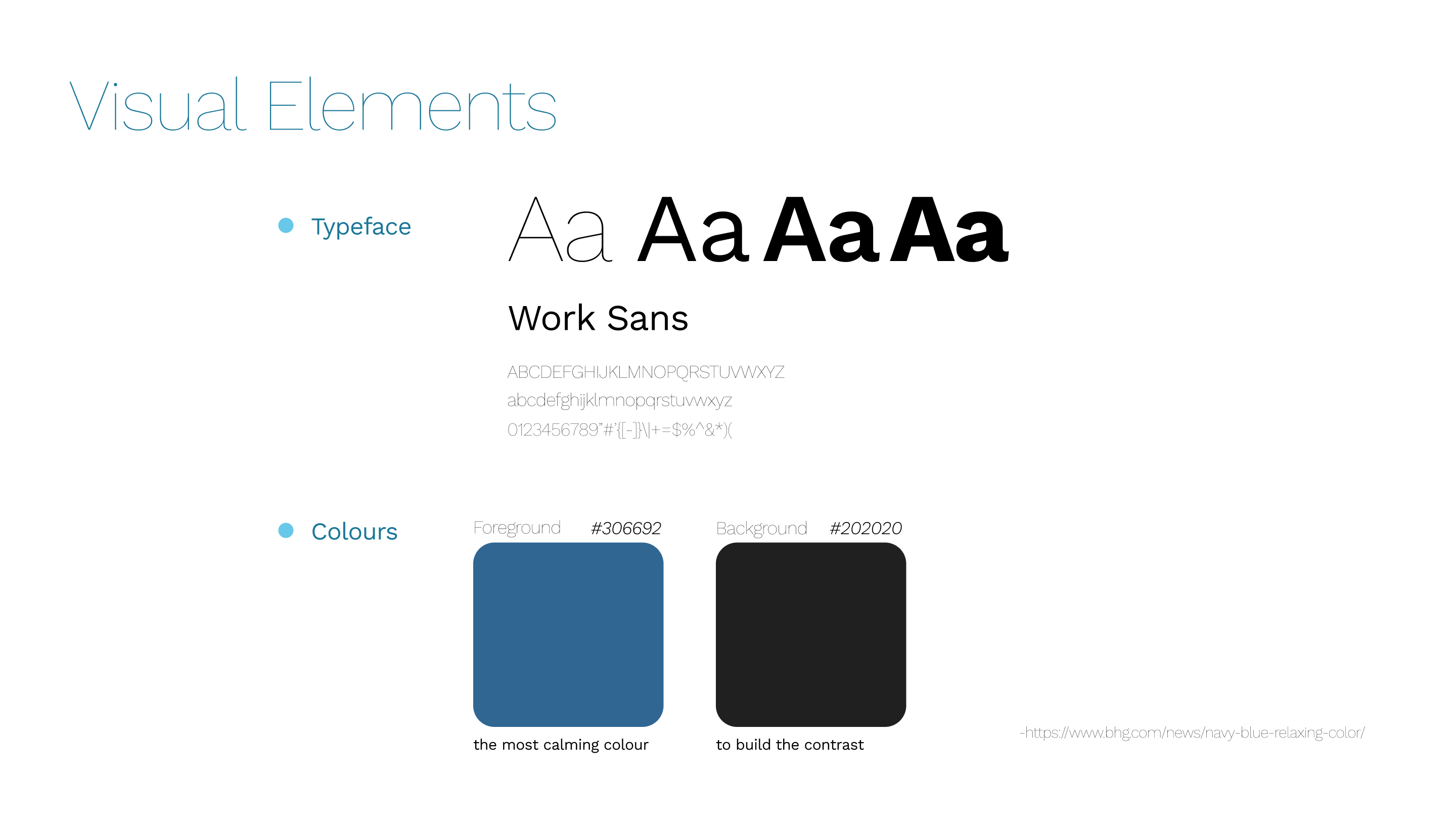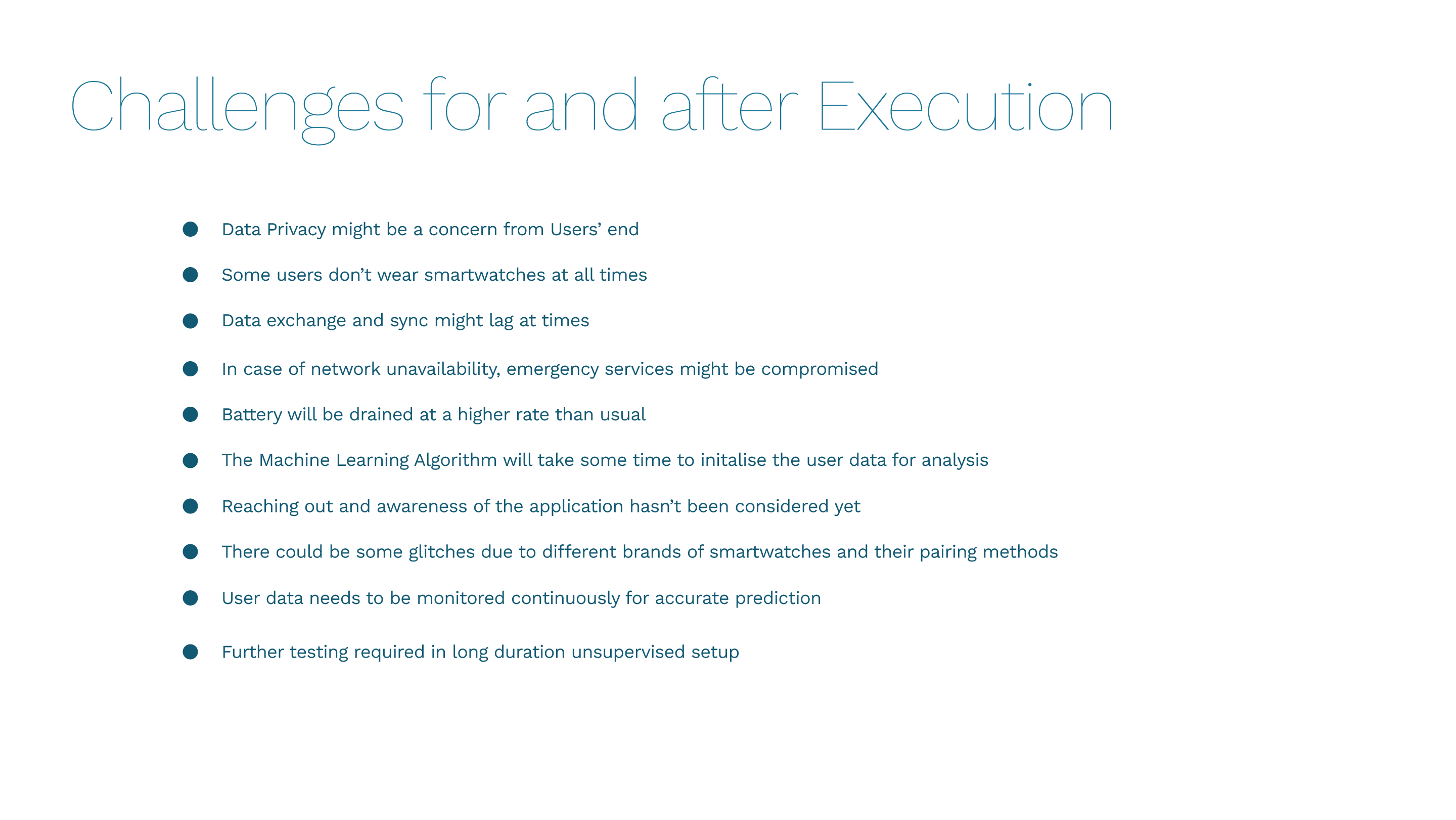
July 2022 - August 2022
Vedika Basarkar
Sourajit Bhattacharjee

UXplorer’22 is design competition organized by YUJ Designs. UXplorer’22 offers an excellent platform for students to exhibit their elegant, human-centred product ideas.
Theme for this competition was Design of Digital Wellness by providing digital solution. Challenge brief was:
Social media is being perceived as a source of happiness today, but it often leads to stress and anxiety. And since we end up checking our phones every 4 minutes, 344 times a day, digital wellness has become more important than ever.
The biggest challenge therefore is to Design for Digital Wellness to:
• Safeguard sanity in a hyperconnected world
• Strike a balance between the real and reel life
• Minimize information overload
To understand the brief and to come up with a solution in limited time, we preferred to follow the double diamond method.
But during finalising the concept, we again had to do research so mostly we followed double diamond with a little back and forth of domain research.
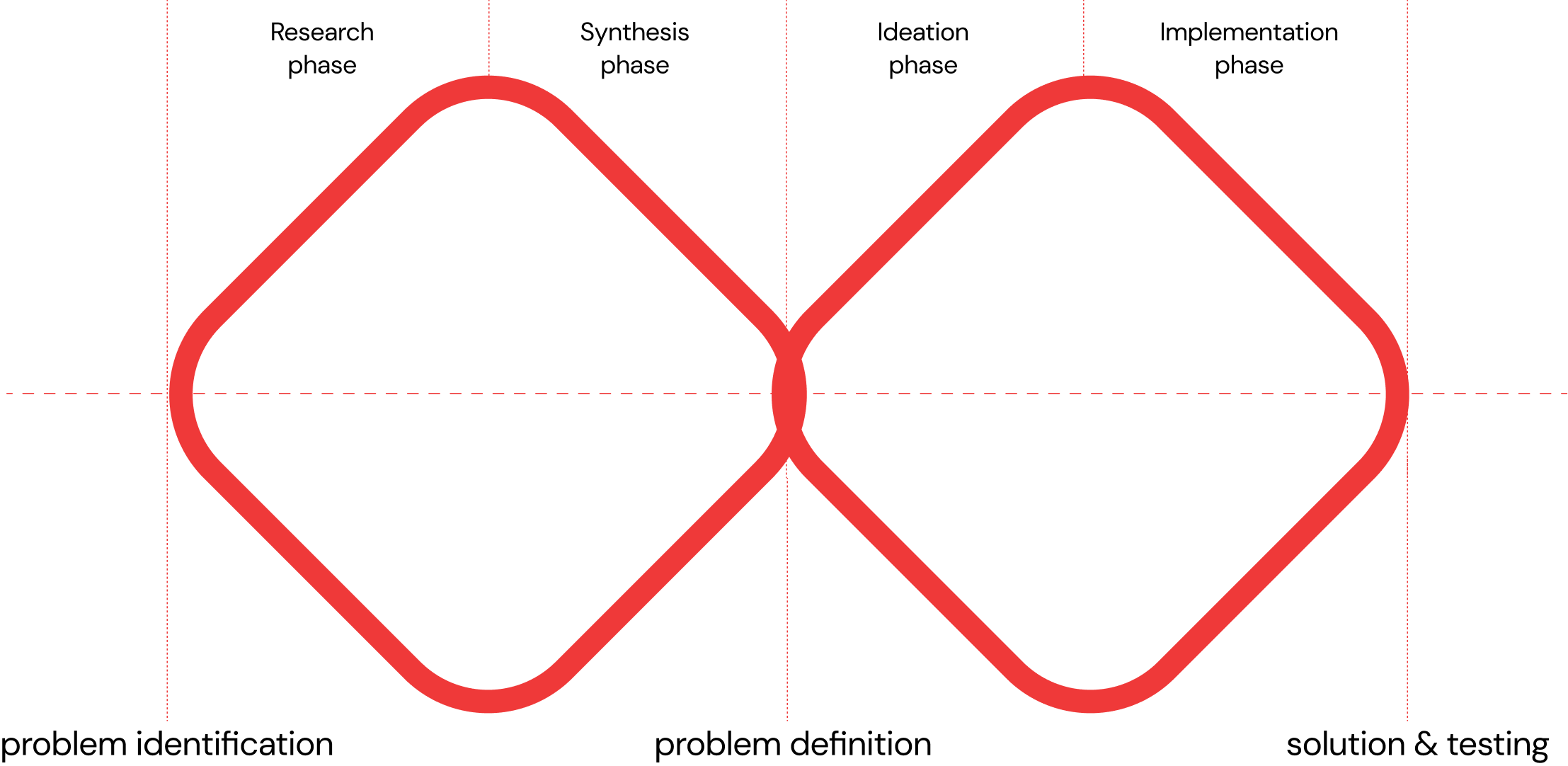
• Social media - Websites and Applications that focus on communication, community-based input, interaction, content-sharing and collaboration..
• Mental well-being - State that enables people to cope with the stress of life, realize their abilities, learn & work well, and contribute to the community.
• Digital well-being - Term used to describe the impact of technologies and digital services on people's mental, physical, social and emotional health.
Google trends for "Social media" shows that the interest in social media has increased considerably over time and is still on a rise.

Google trends for "Digital wellbeing" shows that the interest in Digital wellbeing has boomed suddenly in the past few years and it seems to stay due to increasing awareness.

Studying the trend justifies that the domain is worth looking into and looking for Design gaps.
for understanding users

This is a huge number of users who are mutually included for using different social media platforms. Following are some big social media platforms which have a big number of active users.

for a relation with digital wellness
88% People use Smartphones and 95% of them use it everyday.
150 is the average number of times millennials check their phone per day
70% teens use social media multiple times a day and 16% of them feel addicted to it
18% people feel lonely despite using social media on a regular basis. and overall 47% people feel a lack of in-person communication
According to sources 11 hrs is average daily consumption of media per day.
Fun fact that 40% of people are aware of overusing their phones.

Questions were :
Are we in Control of social media?
What is the reason behind people spending lot of time on it?
If people are aware of overusage then are they doing something about it?
for people's perception
A study by Google EMEA gives a lot of insights on how people perceive activities related to Media Consumption

Checking Notifications came out to be a major distraction that’s pushing people to consume media

Reduction in Attention Span
Addiction
Negative Cardiovascular Impacts
Cognitive Dysfunction
Social Anxiety
Suicidal Urges
Decreased Empathy
Vague-booking
Loneliness
Body Dysmorphia
Irregular Sleep Cycle
Disconnect with real world
Reduced Communication Abilities
Spending more than 3 hours on social media per day puts adolescents at a higher risk for mental health problems
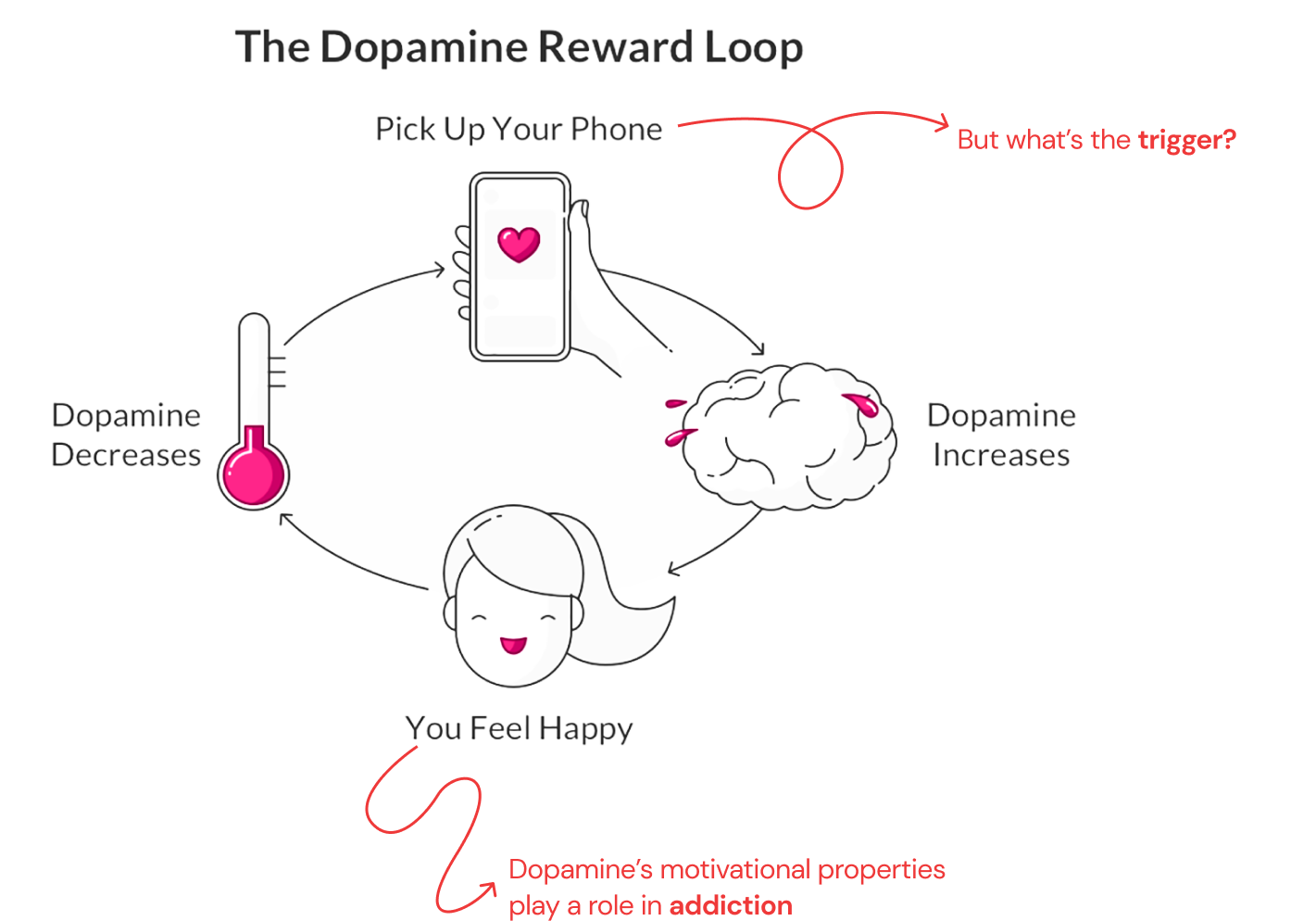

There are different resources to get notifications on your phone. Complex cognitive, emotional, and behavioral functioning gets hampered as brain starts working on emergency mode, resulting in anxious and stressful behavior.


1. The UI in most of the apps had glitches.
2. The ones with good and calming UI had problems with the UX of setting limits.
3. Many of the apps were based on numbers and facts. It might lead to further information overload for the users which is not intentional.
4. Maintaining the calmness of users while taking decision has not been catered to.
1. None of the applications work across devices and are only limited to phones. Considering people are seeking rehab from their phone, it could be a great missed opportunity.
2. Most of the apps rely on forcefully making people not use their phones or showing them stats so that they stop using them. This often leads to more guilt.
3. Most of the apps rely on the user to set limits. Now users might tend to overestimate their ability to resist temptation, inability to fulfil the task might lead them to give up easily.
The Exchange of Information in Social Media Platforms consists of the following Stakeholders

A small Focus Group was conducted with people in the age group of 18-42 to generate insights and narrow down to a problem.

A survey was conducted to validate the secondary research and to also check the user behaviour between ages 18-65. There were patterns observed in social media usage.

Average time spent on these platforms
There were various ill effects stated during this survey. Some of those are listed below:
• Depression
• Performace anxiety
• FOMO on Trends
• Jealousy/ Envy
• Tiredness
• Inferior Complex
• Suicidal Thoughts
• Unconsciously Open Instagram
• Attention Deficiency
• Addiction
• Content Overload
• Fluctuations in Thoughts
• Stress
• Negative Aspirations
• Continuous Distraction from Notifications
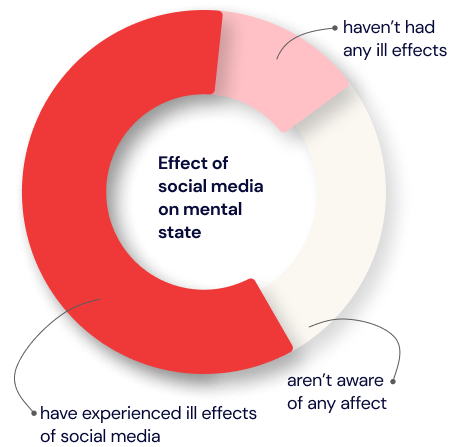

74.2% accepted that social media overuse is bad for mental health.
22.6% parents monitor the phone usage for their children to reduce addiction.
75.3% parents have noticed the ill effects of social media in their children.
Almost 90% of the people who experienced the ill-effects of Social Media have tried to take steps to reduce it. A positive intent can be seen.
The steps taken by the users were mostly the obvious steps suggested online. But a majority of them failed.
Users downloaded apps to defeat other apps. Ultimately the phone is accessed in both cases, which could be a problem.
On further questioning the survey participants, it was found that Screen Timers added guilt to the already existing emotions with same outcome.
Those who are planning to take a step are confused which method would be the best considering the wide array of options available online.
Nobody was considering an option of Offline Self Help or Rehabilitation from Addiction since they didn’t see this as a severe issue.

43, Co-founder, Aviato
• It’s hard to keep children away from mobile when I am not around.
• Children start throwing tantrums and become more impatient because of continuous use.
• Job demands working on mobile. Children see and start immitating.
• Reduce screen time of children.
• Take care of children’s physical as well as mental health.
• Reduce curiosity towards social media and reduce it’s influence.
• Monitor their use of application and restrict use.

19, Student, IIT Rourkela
• It’s hard to control the urge of using social media.
• Ending up spending more time than expected.
• Not able to focus on studying when notifications keeping pinging.
• One after another social media is spread even if you remove any.
• Reduce usage of social media and overall mobile.
• Increase ability to focus while working.
• Should be aware of time spent on different applications.
• To tackle the continuous distraction by notifications.
• Create meaningful connections.

32, Product manager, Hublo
• I have to use my mobile for work purposes, which strains my eyes and head after some time.
• Other than work, I get many notifications from social media platforms, which takes up a lot of time.
• Since lockdown my use of mobile has also increased way too much and it’s affecting my mental and physical health.
• Optimise screen time as much possible.
• Reduce distractions while working.
• Reduce stress, anxiety, headache.
• Improve mental health and physical health.
• Reduce notification count.
Following is a scenario for one of the personae

Excessive screen time creating an imbalance in personal and professional life
Inability to cut off influence of social media
Inability to leave phones alone
With every notification users check their phones
Low attention span
Even without notification, users check their phones looking for missed notifications
Users have the intent but aren’t able to maintain healthy screen habits
Emotional disconnect
Lack of offline engagement with community
Constant distractions
Deteriorating physical and mental health
Laxed attitude towards addiction
Lack of ecosystem to keep phones away
Reduce over usage of social media and mobile as well
Reduce interruption of notifications generated by applications
Monitoring of application use and if possible content as well
Creating distance between children and mobile or social media
Need of breaking streak of continous usage of every application
Monitor physical and mental health
Spending more time offline with real people
Lower cognitive load from phones
A healthy lifestyle mentally and socially
Designing a means to allow users to indulge in tech, rehabilitate from their addiction to social media by cutting them out of the notification dopamine reward cycle in order to lead a healthier lifestyle.
A digital non-phone based system/application that allows users to cut off notifications without being harsh on the users’ habits or behaviour that they adopt as a part of their lifestyle.
What else are people carrying that might help in reducing screen time?

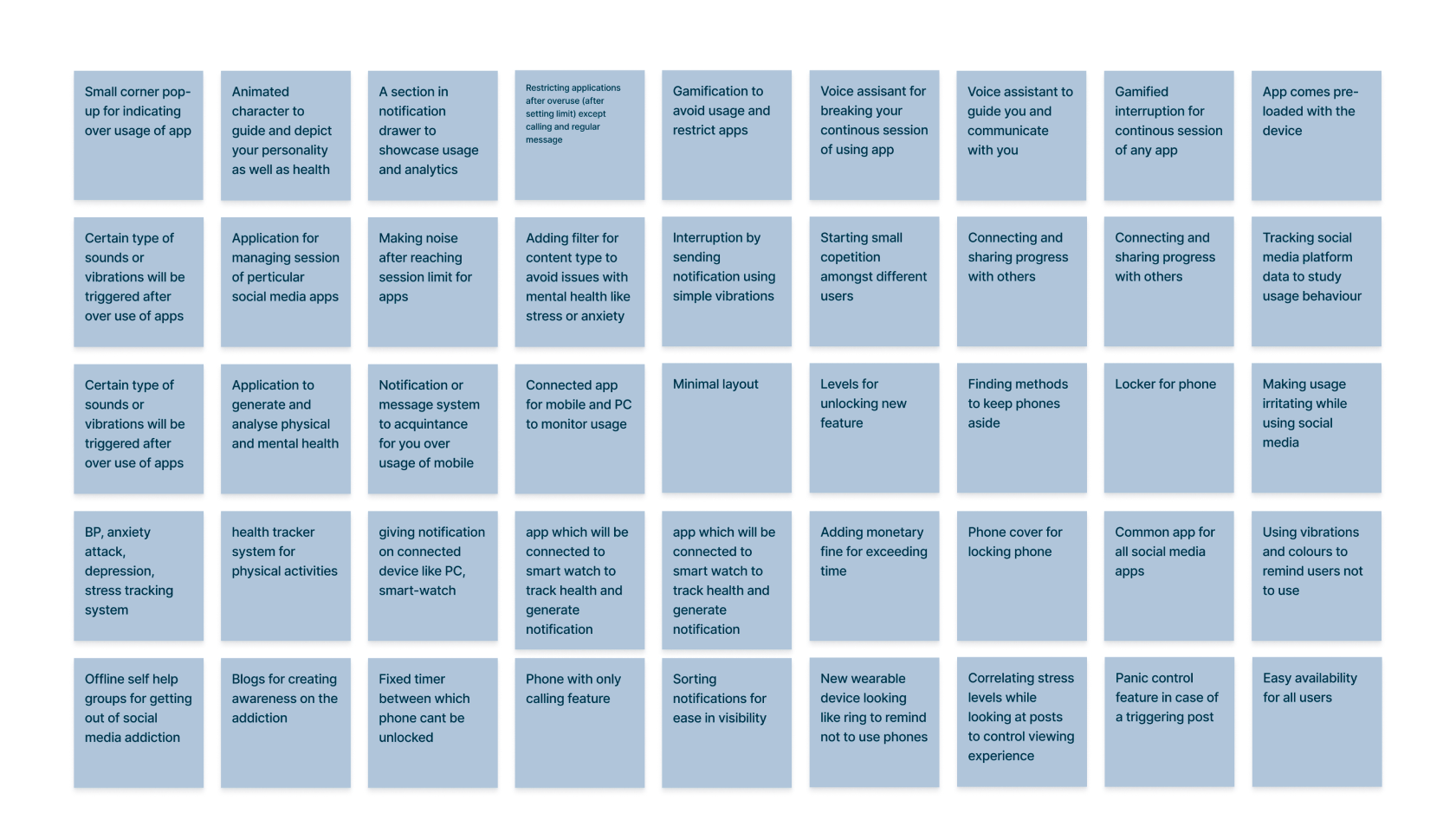

Designing an application to allow people using Smart Wearables to cut their addiction of social media by cutting them out of the notification dopamine reward cycle in order to lead a healthier lifestyle.
Out of many ideas, some were finalised as shown below


Considering the pros and cons of each, and also the application areas of all the devices, smartwatches were decided to be the main application area.

• Reminding users to not use phones through vibrations.
• Giving out vibrations using smartwatches to distract user.
• Controlling vibrations to make users feel calm after distraction.
• Using AI to study the user’s behaviour and health data.
• Making quick decisions if user is using social media a lot and sending feedback.
• Also checking current state of users and suggesting activities to do.
• Using calm images and animations to distract users from notifications.
• Studying unlock durations and predicting temptations using AI.
• App doesn’t require support from phone, hence keeping it out of loop.
• Using games to distract users in case of boredom.
• A parental mode could be provided for parents of teens.

The intensity reduces to calm the nerves and the frequency increases so that the brain doesn’t get distracted instantly. Also, the pattern follows the Fibonacci series which has been proven to be pleasing by research.
The vibrations could also be merged with an amplifier to give out calming sounds corresponding to the vibrations produced by the motor. But this would limit to devices which have amplifiers/speakers.
The servo motor inside wearables can be controlled using a simple code executed through the product. The intensity of vibrations as well as the frequency can be controlled through it
